As humpback whale-watching season has kicked off across the Pacific, Hawaii and French Polynesia are updating their regulations to balance wildlife tourism with conservation.
With Hawaii’s winter humpback visitors arriving from Alaska and Moorea’s from Antarctica, these two destinations have long drawn travelers for unparalleled whale experiences. However, recent changes are reshaping what those encounters will look like.
In Hawaii, the season typically runs from November through April, with peak months between January and March. French Polynesia spans from July to November (their winter), often peaking in September and October.
Beat of Hawaii editors have long enjoyed whale watching throughout the Hawaiian Islands, both from land and water. Recently, Rob and Jeff visited Moorea during whale season and swam close to them. Yes, that’s right. In French Polynesia, swimming close to whales is allowed.
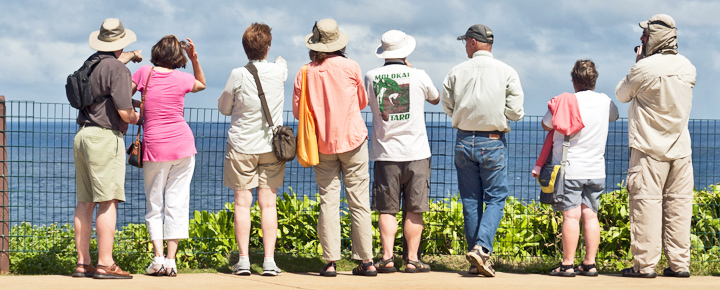

Hawaii’s new whale-watching limits are effective this season.
Under the Marine Mammal Protection Act, Hawaii has reinforced rules to protect humpback whales during their seasonal migration from Alaska. Effective January 2024, regulations mandate that vessels and individuals maintain a distance of at least 100 yards from whales, while aircraft must stay at least 1,000 feet above. These rules, designed to minimize stress on the whales and preserve natural behaviors, are strictly enforced by NOAA and local authorities, including Hawaii DLNR.
Although Hawaii has always required a 100-yard minimum, the updated language reinforces prohibitions against approaching whales by boat or in the water. Swimmers hoping for a close encounter will find strict limitations, as direct contact with humpbacks is completely off-limits in Hawaii.
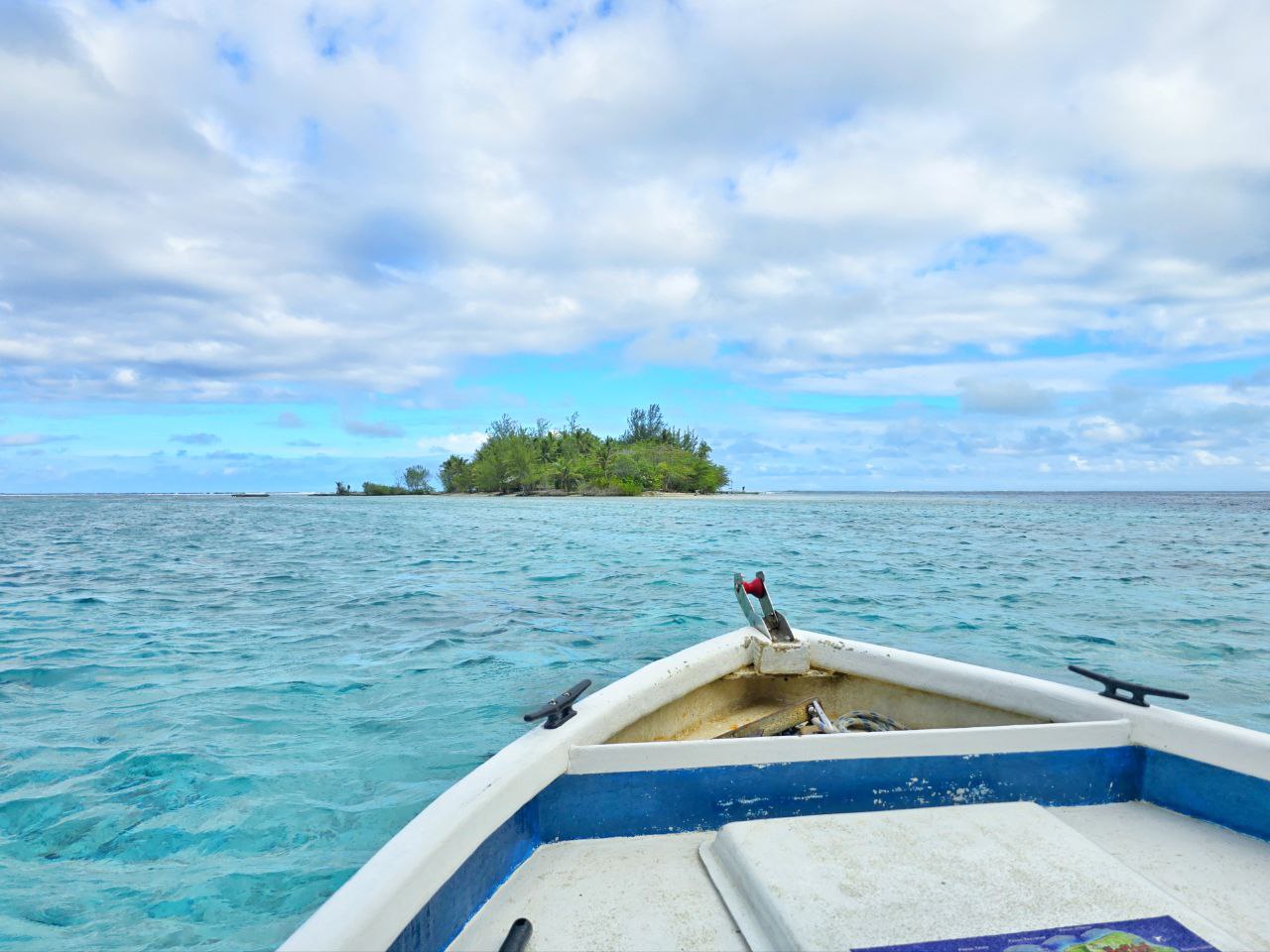

French Polynesia’s tightening approach: new whale engagement rules.
Meanwhile, Moorea in French Polynesia has refined its approach as whale-watching peaks from August through November. French Polynesia plans to limit the visitor impact by capping tour boat numbers that rose from 60 in 2023 to 90 in 2024.
Under new regulations, only three boats will be allowed near a whale at any one time, and operators will be restricted to one boat per company. Private boats must stay at least 300 meters away.
While Moorea allows swimming with whales, the swimmer distance will be reduced from 30 meters to 15 meters—a shift seen as controversial by some experts who argue it’s too close for safety and respectful interaction.
Moorea’s tighter enforcement reflects a rising awareness of tourism’s impact on marine life. For visitors, this means a more controlled yet captivating encounter, with local operators responsible for compliance and ethical practices.
Beat of Hawaii editors sense that regulations may not be followed as closely in French Polynesia as in Hawaii. For example, we witnessed operators baiting wildlife with food to get them to appear near the tour boats.
Eco-tourism’s new era: what travelers need to know.
The changes in both Hawaii and Moorea signal an evolution in eco-tourism. Where travelers once sought closer interactions, they’re now witnessing a shift toward mindful tourism, balancing the thrill of whale encounters with a commitment to conservation. This is particularly important as tourism booms in these sensitive marine habitats, with regulations aiming to ensure sustainable experiences.
For Hawaii, this might mean fewer incidents of boats encroaching on whales’ territory, thanks to heightened oversight. In Moorea, tour guides and boat operators will need to play an increasing role in managing safe whale interactions, ensuring that group sizes are kept to a minimum and that all participants understand their role in respecting the sanctuary’s guidelines.
Same ocean, but not the same humpback season.
Hawaii and Moorea offer spectacular, if 2,500-mile distant, opportunities to see these majestic creatures, reminding travelers that respecting natural behavior is a privilege.
If you go to both destinations, you can enjoy whale watching almost year-round since the winter season is opposite in both places. In French Polynesia, whale watching starts in July, and in Hawaii, it usually starts in October.
The thousands of miles humpback whales cover highlight the global importance of protecting their breeding grounds, where whales come to rest, mate, and give birth each winter. As tourists adapt to new realities in whale watching, they join a movement that hopefully will lead to a less invasive, more conscious style of travel.
We welcome your whale-watching comments!
Get Breaking Hawaii Travel News

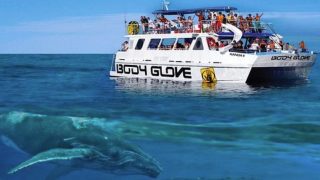

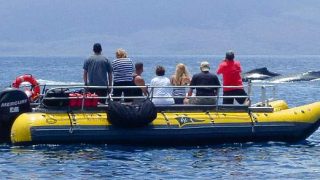

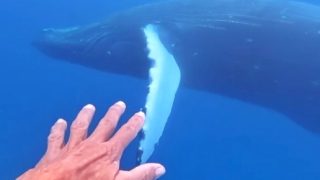

I’m all for protecting the wildlife as much as possible. The way we treat wild creatures on this planet is often barbaric and completely selfish. I feel so lucky to have experienced seeing the wonderful sea turtles and humpbacks during my stays on Hawaii. We owe them as much help to survive as possible. In French Polynesia they won’t even make the ferry boat operators lower their speeds around the whales, so they end up maiming them and giving them agonizing deaths. Disgusting.
You need to get all your facts right about the new rules in Tahiti.
Three boats with eight people +3 whale guides = 27 People in the water at one time surrounding the whales!
After nine years of bringing groups to Moorea, (Over $500,000 Income for the country) I have cancelled my tours for 2025 as these new rules do not align with my Strict non-harassment policy.
Also the 100m’s to snorkel to the whales, Is way too far for the average person. Therefore I have to put my tour Leader In with seven guests to make sure they make it safely to the whales. There is nothing good about either of those situations. We will continue to operate in the Tonga & Aitutaki, Cook Islands more sensible And non-harassment guidelines.
I’m strongly in favor of allowing the whales to go about their business unmolested as we have previously marched them to the edge of extinction. Keep your distance and keep the aircraft above 1,000 feet. I’m a pilot and 1,000 feet is close enough to view a lot of wonderful things safely.
Speaking of aircraft, the upcoming SeaGlider will not be subject to the FAA Guidelines, so very fast and very low (its operating environment) will be their world. The Coast Guard will have jurisdiction over the SeaGliders as they have been deemed “maritime vessels”; the lawyers were ahead of us there.
So, at some point, a whale will spy-hop or even breach in front of or in close proximity to a SeaGlider. Sudden evasive maneuvers will be tricky low and fast. I want to see the flight test footage testing that portion of the envelope before I climb in.
I hope it all works out for everyone, but the best plans seem to always have unintended consequences.
I am going to visit Maui at the end of February! I am excited and respect the rules put in place for whale watching. I have been in Maui three times and this will be my fourth.
Why doesn’t somebody stop the fishermen at South Point from using large trash bags to get their fishing lines out from shore these bags end up in the ocean and have killed whales in previous years. You’re so worried about people swimming with whales but you don’t do anything about people throwing trash and trash bags into the ocean on a daily basis you can see it anytime you go down to South Point there’s numerous bags being flown across the water most of them end up in the ocean and harming whales I’ve called and reported it but nobody does anything about it but God forbid you jump in the water and swim with the whales like they do in other parts of the world. It’s all about making money and giving people citations.
So, how will this 1000ft limit on aircraft, affect the planned hovercraft ferry flights between the islands? How do you enforce that? Does money eventually win over, versus marine life?
Population in Maui last year seemed more abundant than the prior few years. They are majestic animals that do need to be protected especially when they are giving birth to new generations.
North Pacific humpback whales are a conservation success story. During the last twenty years, the north Pacific humpback whale population has grown from approximately 2,000 to more than 21,000 whales. During the winter breeding season, more than 12,000 humpback whales visit Hawaiian waters.
The new rules sound more like eco-hysteria.
And there’s that “mindful tourist” admonition again…spare me.
I was aware of the 100 yard rule but what happens if the whales come to you? I was on a tour last year where we just sat in the water, engines off and a mama and a calf came within the 100 yards. Calf had perfected his breaching skills and was having a ball showing off! I did not go in the water last winter as I had on previous trips–the tour operator did not suggest it at all last winter; thought perhaps that change was due to giving the whales their space. Anyway, once mama and calf moved on, so did we. Coincidentally, it is unreasonably warm in Michigan today and I happen to be wearing my whale tour boat t-shirt. The particular tour I book is a very small, personal tour boat–looking forward to my next tour Winter 2025!
If whales or any protected sea mammals “come to you” then you are clear. “Motor off” is the protocol if
they approach and it is too late to safely clear the area. However, if you swim, or kayak, or motor a few hundred yards Ahead of their path in the hopes of waiting for them to “come to you,” and you are observed doing this, you will likely be stopped and maybe even cited. I think whales are as curious as we are and a few can break away from the pod to check us out – hardly a captain’s fault if floating (or even a slow troll) and all of a sudden they surface feet off your bow.
More regulations in Hawaii! Shocking i know…
Cautiously optimistic that the new rules will still net a reasonable opportunity for my family to be wowed by views of the whales this coming Feb.
Not really sure what we can say we did, however, to pat ourselves in the back when it comes to the increase in whale population. Which actual efforts caused the increase? What direct effect did those efforts have that caused the whales to more successfully procreate?
Like the boom of MD Blue Crabs during the 2009 season, there was nothing anyone could point to to say, “see, these extreme efforts and limitations and money we used to ensure a greater population finally worked…” They had been doing the same things for generations with no increase, then one day, boom!
I suspect it is simply natural ebbs and flows that would have happened if we did nothing, or if we made ourselves destitute trying to make something happen.
We don’t have near as much control over our impact on nature as we would like to think we do.
I follow this website: whalesafe.com/ Maybe the Coast Guard should implement it on the Hawaiian Islands during migration and beyond.
We sometimes see them from our home. Used to see a lot of them, then had some recent years without any (maybe they were in whale-COVID lock down?), but last winter had many days with a small pod of them right off-shore. Was nice to have them back.